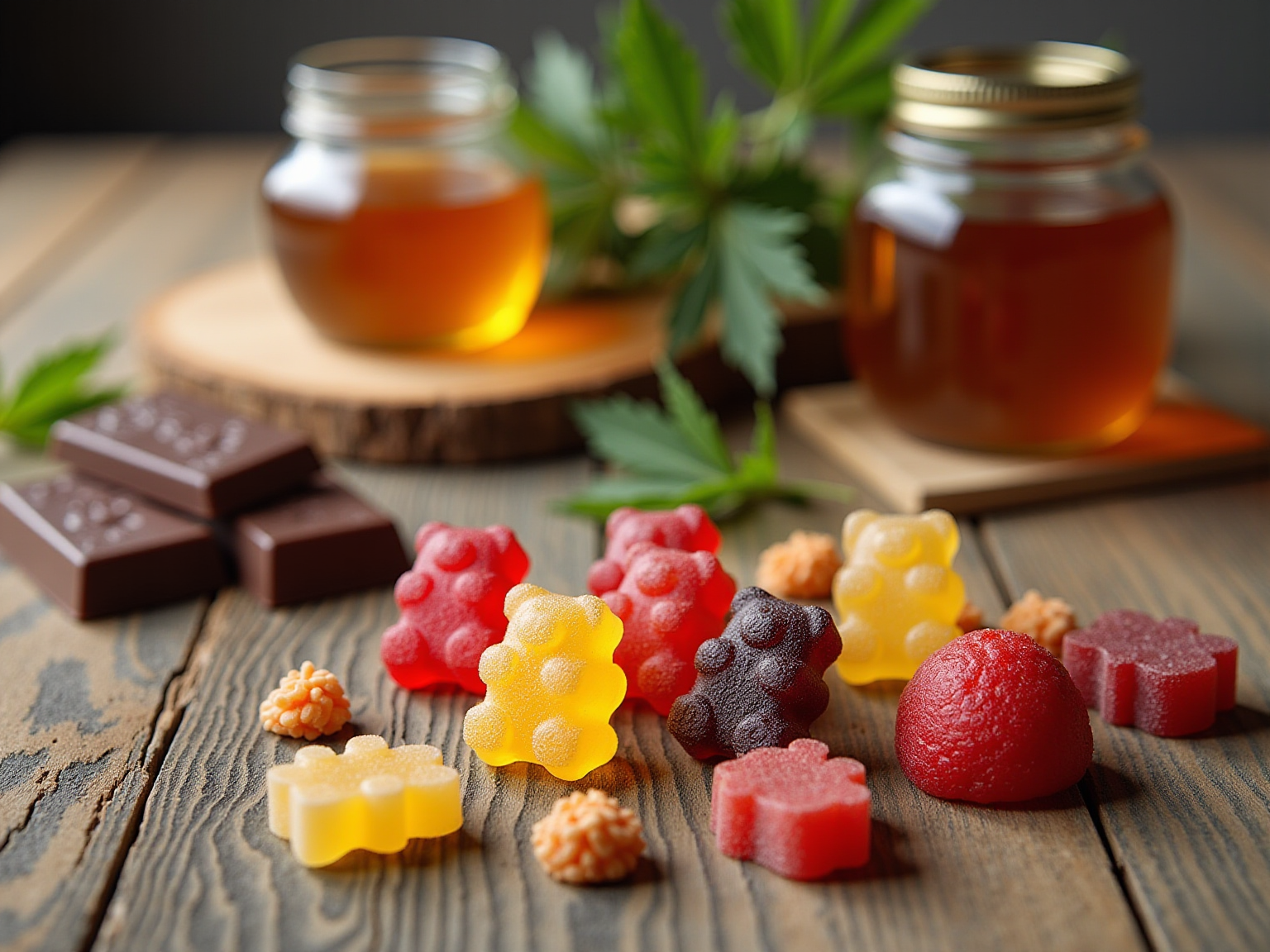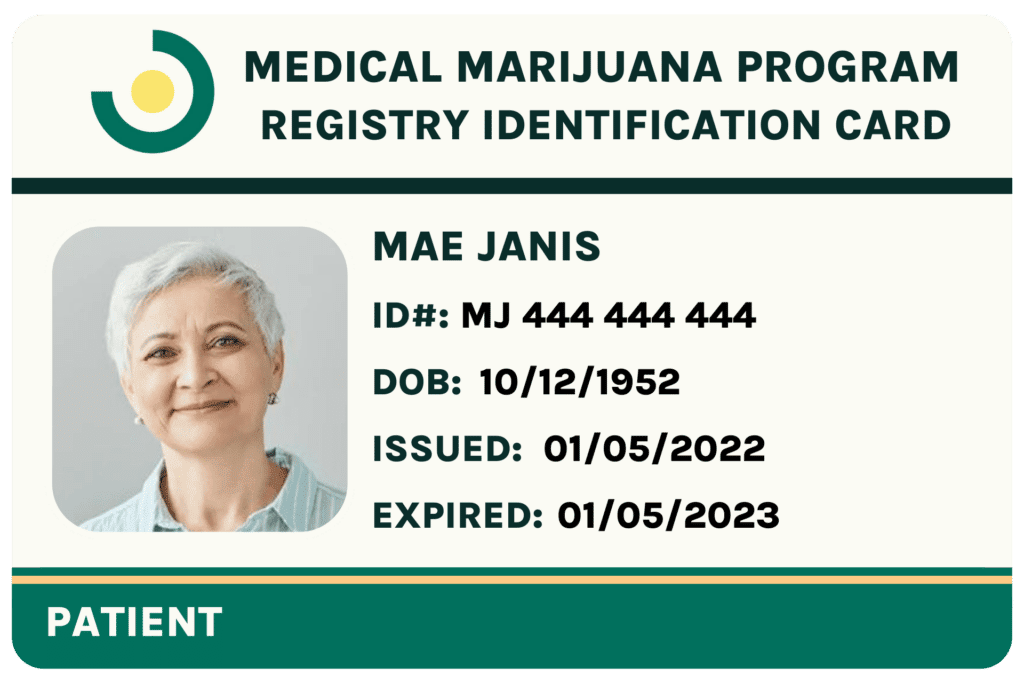Select the Best Edible for Pain and Inflammation: A Step-by-Step Guide
by Maya Green · May 8, 2025
Discover the best edible for pain and inflammation with our comprehensive step-by-step guide.

Overview
If you’re dealing with pain and inflammation, finding the right edible can make a significant difference in your comfort. Edibles containing cannabinoids like THC and CBD are known for their effectiveness in alleviating discomfort and reducing inflammation. It’s important to remember that understanding the components of these edibles—such as their cannabinoid content and the effects of terpenes—can help you select the most suitable product for your individual health needs.
Many people struggle with managing conditions like arthritis and chronic pain, and it can feel overwhelming at times. By educating yourself about these products, you can make informed choices that may improve your quality of life. Consider discussing your options with a healthcare professional who understands your unique situation.
You may find that exploring different edibles leads to a more tailored approach to your pain management. Remember, you’re not alone in this journey, and there are supportive resources available to help you navigate your choices. Take the time to research and reflect on what might work best for you, and don’t hesitate to reach out for guidance.
Introduction
The world of cannabis edibles is evolving rapidly, presenting a diverse array of options that cater to those seeking relief from pain and inflammation. From tantalizing gummies to rich chocolates and soothing beverages, these products harness the power of cannabinoids—THC and CBD—to provide therapeutic benefits. It’s important to remember that as consumers become more informed about the ingredients and effects of these edibles, understanding their unique properties is essential for making the right choices.
You may find that this article delves into the different types of cannabis edibles, their effects on pain management, and the crucial steps for selecting the ideal product tailored to your individual needs. It also highlights the importance of being aware of potential risks and dosage guidelines, ensuring a safe and effective experience in your pursuit of wellness. Together, we can navigate this journey towards relief and comfort.
Understand Edibles: Types and Ingredients
Cannabis treats come in a variety of forms, including gummies, chocolates, baked items, and drinks, with each being considered the best edible for pain and inflammation while also promoting sleep improvement. It’s important to understand the main components in these edibles, as they can significantly impact your experience.
- Cannabinoids: These active compounds found in the plant, primarily THC (tetrahydrocannabinol) and CBD (cannabidiol), play a crucial role in their therapeutic effects. THC is known for its psychoactive characteristics and ability to alleviate discomfort, while CBD is non-psychoactive and recognized for its anti-inflammatory properties. Many individuals have found that medical marijuana is the best edible for pain and inflammation, providing substantial relief from chronic pain and aiding in the management of inflammatory conditions, making it a valuable option for those with ailments like arthritis and fibromyalgia. Additionally, medical cannabis can ease symptoms of anxiety and depression, support cancer patients by reducing discomfort and nausea, and offer neuroprotective benefits for those with epilepsy.
- Terpenes: These fragrant compounds present in cannabis not only enhance the taste and aroma but also amplify the benefits of cannabinoids. For instance, myrcene is linked to sedative effects, which can be helpful for sleep, while limonene may uplift your mood and lessen anxiety. The synergy between terpenes and cannabinoids can further enrich the therapeutic benefits, providing a holistic approach to managing discomfort and enhancing overall well-being.
- Sweeteners and Fillers: Many edible products include sugars or artificial sweeteners, which can impact your health. It’s essential to consider these ingredients, particularly if you have dietary restrictions or are monitoring your sugar intake.
By understanding these components, you can make informed decisions about which products may best suit your needs for relief and improved sleep quality. As the cannabis-infused consumable market is projected to grow at a CAGR of 16.30%, staying informed about the latest developments and ingredient innovations is vital for selecting the most effective options. Remember, your journey toward wellness is important, and being knowledgeable empowers you to make choices that align with your health goals.
Explore How Edibles Affect Pain and Inflammation
Cannabinoids engage with the body’s endocannabinoid system, a complex network that plays a crucial role in regulating discomfort and inflammation. Understanding how the best edible for pain and inflammation can provide relief is essential for those seeking beneficial options.
Pain Relief: THC binds to CB1 receptors in the brain, effectively diminishing the perception of pain. Many patients utilizing THC report substantial discomfort relief, often surpassing traditional analgesics. A 2025 study revealed that veterans using medical marijuana encountered fewer PTSD symptoms and required fewer prescription medications. This emphasizes marijuana as a promising substitute for discomfort management, especially considering that three in four overdose fatalities involved an opioid.
Anti-Inflammatory Effects: CBD is recognized for its ability to mitigate inflammation by inhibiting the production of inflammatory cytokines. This characteristic makes CBD-infused products the best edible for pain and inflammation, particularly beneficial for individuals experiencing conditions such as arthritis and chronic pain syndromes. Many patients have reported major improvements in their quality of life, preferring cannabis over opioids due to its effectiveness without the risk of addiction.
Long-Lasting Effects: One of the key advantages of edibles is their prolonged effect compared to smoking or vaping. This extended duration makes them the best edible for pain and inflammation, as they are ideal for managing chronic discomfort throughout the day and providing consistent relief without the need for frequent dosing. Individuals with long-lasting discomfort and multiple sclerosis have discovered that incorporating marijuana into their treatment strategies enables them to reclaim control and lead more satisfying lives.
Dr. Kiran Kalyankar explains, “Now one may ask, why is this plant so effective?” The answer lies within us. Our body carries the Endocannabinoid system, a biological system full of cannabinoid receptors located in the brain, organs, connective tissue, glands, and immune cells. Understanding these impacts is essential for selecting the best edible for pain and inflammation to effectively manage your discomfort and enhance your quality of life. Moreover, exploring the experiences of cancer patients who have found relief through cannabis can offer valuable perspectives on the potential benefits of cannabis-infused products. You may find that their stories resonate with your own journey and inspire you to consider new avenues for relief.
Select the Right Edible: A Step-by-Step Approach
Choosing the best edible for pain and inflammation can feel overwhelming, but by following these thoughtful steps, you can make a well-informed choice that meets your needs.
- Determine Your Requirements: Start by reflecting on whether you need immediate relief or something that lasts longer. If you’re dealing with acute pain, fast-acting options like gummies may be considered the best edible for pain and inflammation. For chronic discomfort, consider products designed for sustained release, which can provide more enduring results.
- Choose the Right Cannabinoid: Next, think about which cannabinoid suits your situation best. THC is known for its pain-relieving properties, but it can also lead to psychoactive effects. On the other hand, CBD is non-psychoactive and is recognized as the best edible for pain and inflammation.
- Understand Indica vs. Sativa: It’s also important to recognize the differences between indica and sativa gummies. Indica strains tend to be more calming, making them ideal for evening use, while sativa strains can be energizing, perfect for daytime relief. This distinction is vital for achieving the desired effects of the best edible for pain and inflammation.
- Check the Dosage: When you’re ready to try an edible, begin with a low dose, around 2.5-5 mg of THC or CBD, to see how your body responds. Take your time; wait at least an hour before considering more, as infused products may take a while to show their effects. Understanding the potency of cannabis-infused honey can also help ensure you’re using it safely and effectively, especially if you’re new to this. Remember, how you consume it can greatly affect the onset and duration of its effects.
- Read Labels Carefully: Always check product labels for clear information about cannabinoid content, ingredients, and any additional beneficial compounds like terpenes. These terpenes can enhance therapeutic effects through the entourage effect, where THC, CBD, and other compounds work together.
- Consider Your Lifestyle: Finally, choose the best edible for pain and inflammation that aligns with your preferences, whether that’s gummies, chocolates, or drinks. By embracing these steps, you empower yourself to make a knowledgeable choice tailored to your needs. It’s also wise to stay aware of potential side effects, such as drowsiness or dry mouth. Consulting with a healthcare professional can help you navigate these concerns effectively. For personalized guidance, Aunt Mary’s Herbal Shop offers consultations to assist you in selecting the right products for your discomfort relief, ensuring that your unique symptoms and goals are thoughtfully considered.
Consider Potential Risks and Dosage Guidelines
While marijuana-infused treats are often regarded as the best edible for pain and inflammation and can also improve sleep, it’s important to recognize the potential risks involved.
- Overindulgence: Unlike smoking, these products may take longer to take effect, which can lead some users to consume more than intended. To help mitigate this risk, it’s advisable to start with a low dose and gradually increase it, following the principle of ‘start low and go slow.’ This approach can help prevent unpleasant experiences related to overconsumption. It’s crucial to remember that marijuana-induced psychosis can occur, resulting in symptoms like paranoid delusions and confusion, particularly with excessive intake of edible marijuana products.
- Side Reactions: Common side effects of marijuana edibles include dizziness, nausea, and anxiety, especially when consuming high amounts of THC. If you experience adverse effects, consider lowering your dosage or choosing a product with a higher CBD content, such as CBD-infused honey. This alternative may provide relief without the psychoactive effects of THC. Recognized for its medicinal benefits, marijuana honey is often regarded as the best edible for pain and inflammation, helping users achieve relaxation and pain relief without intoxication.
- Legal Considerations: It’s essential to be aware of the legal status of marijuana in your state, as regulations can vary widely. Cannabis is classified as a Schedule I substance under the Controlled Substances Act, highlighting the importance of understanding these laws for safe usage. Additionally, many consumers find it challenging to interpret labeling details on food items, including marijuana-infused treats, emphasizing the need to fully grasp product information.
Dosage Guidelines:
- For newcomers, a dosage of 2.5-5 mg of THC or CBD is recommended. More experienced users may find dosages between 10-20 mg appropriate, depending on individual tolerance and symptom severity. When using cannabis honey, start with a small amount, like half a teaspoon, and wait at least 60-90 minutes before increasing your dose to assess its effects. Always consult with a healthcare provider before starting any new treatment, especially if you are on other medications or have existing health conditions. By being aware of these risks and following dosage recommendations, you can safely enjoy the therapeutic benefits of cannabis products, particularly the best edible for pain and inflammation, including cannabis-infused honey. The cannabis-infused edibles market is evolving as public perception shifts, leading to a diverse array of product offerings that cater to various dietary needs.
Conclusion
Navigating the world of cannabis edibles can be an empowering journey toward finding pain relief and enhancing your overall well-being. By understanding the various types of edibles—such as gummies, chocolates, and beverages—you equip yourself with the knowledge needed to select products that truly meet your specific needs. The unique properties of cannabinoids, particularly THC and CBD, reveal their therapeutic potential, offering significant relief for conditions like chronic pain and inflammation.
It’s important to remember that choosing the right edible involves a thoughtful process. Consider your individual needs, desired effects, and appropriate dosages. By following a step-by-step approach, you can tailor your choices to optimize the benefits of these products while minimizing any risks. Being aware of potential side effects and legal considerations is crucial for a safe experience, highlighting the importance of informed consumption.
Ultimately, cannabis edibles represent a promising alternative for those seeking relief without the complications often associated with traditional medications. As the market continues to evolve, staying informed about new developments and innovations empowers you to make educated decisions that support your health and wellness goals. Embracing this knowledge can pave the way for a more comfortable and fulfilling life.
Frequently Asked Questions
What types of cannabis edibles are available for pain and inflammation relief?
Cannabis edibles come in various forms, including gummies, chocolates, baked items, and drinks, all of which can help with pain, inflammation, and sleep improvement.
What are the main active components in cannabis edibles?
The main active components in cannabis edibles are cannabinoids, primarily THC (tetrahydrocannabinol) and CBD (cannabidiol), which significantly impact their therapeutic effects.
How do THC and CBD differ in their effects?
THC is psychoactive and known for alleviating discomfort, while CBD is non-psychoactive and recognized for its anti-inflammatory properties.
What conditions can medical cannabis help manage?
Medical cannabis can provide substantial relief from chronic pain, aid in managing inflammatory conditions like arthritis and fibromyalgia, ease symptoms of anxiety and depression, support cancer patients by reducing discomfort and nausea, and offer neuroprotective benefits for those with epilepsy.
What role do terpenes play in cannabis edibles?
Terpenes are fragrant compounds that enhance the taste and aroma of cannabis and can amplify the benefits of cannabinoids. For example, myrcene is linked to sedative effects for sleep, while limonene may uplift mood and reduce anxiety.
Why is it important to consider sweeteners and fillers in cannabis edibles?
Many edible products include sugars or artificial sweeteners, which can impact health. It’s essential to consider these ingredients, especially if you have dietary restrictions or are monitoring sugar intake.
How can understanding the components of cannabis edibles help consumers?
By understanding the components, consumers can make informed decisions about which products may best suit their needs for relief and improved sleep quality.
What is the projected growth of the cannabis-infused consumable market?
The cannabis-infused consumable market is projected to grow at a CAGR of 16.30%, making it important for consumers to stay informed about the latest developments and ingredient innovations.
Last Updated: July 11, 2025
Get Approved for Your Medical Marijuana Card in Minutes!

Get Your Medical Card
Connect with a licensed physician online in minutes

Like This Article?
Share with your friends
Table of Contents
Keep Reading
-
Exploring Cannabis Job Training Programs
Ready to launch your career in the cannabis industry? Explore the top cannabis job training programs that will equip you with the skills and knowledge needed to succeed. Discover more now and take the first step towards a rewarding career!
-
How Do I Get a Medical Marijuanas Card in Maine?
Looking to get a medical marijuana card in Maine? Here’s everything you need to know, from qualifying conditions to the application process.
-
Examining The Physical Effects Of Medical Marijuana Use
Unveiling the Eye-Opening Physical Effects of Medical Marijuana Use. Get ready to be amazed by its impact on your body. Click here to explore!



